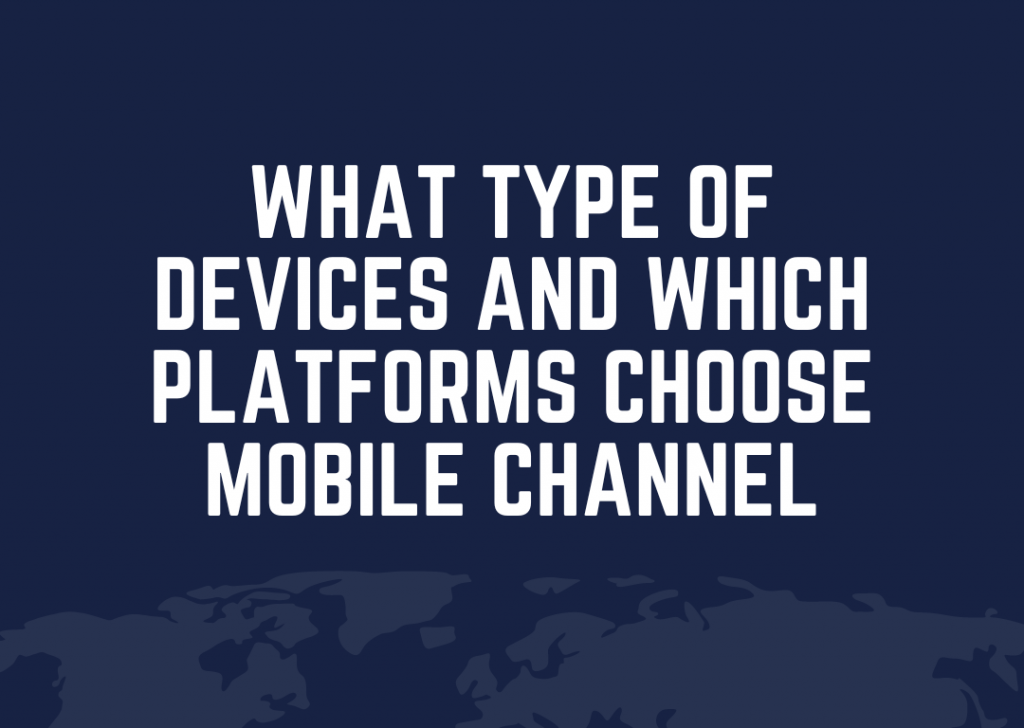
What type of devices and which platforms choose mobile channel
When you are deciding how to build a mobile channel, is it really vital to choose the devices, platforms and the resolution? Rather, what is more important is to consider how and from where you are using such features, and in which situations they are used. Such issues can be described as their “contexts”.
When it comes to designing mobile websites or native mobile applications, we often take into account a mobile device and its features. What type of devices and which platforms will we use with them in order to open our applications online? What resolutions do they have? And are users are now visiting our website via their mobile phones? When deciding whether and how to build a specific mobile channel, what is important is not the end device, but the method of using your content or services, i.e. the “mobile context”.
Thus, when designing a solution, we should consider the circumstances of its use, where it is being used, how quickly users are accessing your service, and how prepared they are to do so. They often have more than one device; their circumstances dictate which device they will use – not the other way round (and if during a 10-minute wait at the bus stop I decide to pull out my laptop, I will behave in a different way than if I was using my laptop sitting in the office!).
HOME (work / desktop)
Standard for the user; carries out tasks planned beforehand, and has set times for them. Does not act impulsively. Has a good connection, sufficient power supply, fast internet and a comfortable work environment.
Mobile context: occasional use
„Right here, right now“ Impulsive need and limited time for specific activities. Specific place and geo-location possibility Limited convenience when using mobile, limited connection speed, limited power supply and thus time is limited. Often use devices on a one off basis, starts later activities/conversion.
Mobile context: regular/repeated use
Similar features to the “occasional use” category, but more activity is planned and repeated. The user continuously changes and optimises his/her activities and service use. More specialised use but more frequent.
The scenarios can be categorised into three groups. Ultimately, the idea of “mobile contexts” is nothing new, and you can find many interesting articles on this topic.
For example, Google classifies the three types of mobile user behaviour as follows:
- Repetitive Now (people who use their mobiles so that they are in constantly in touch with current events and information, which are changing fast, e.g. stock exchange results, sports results, Facebook feeds, etc.)
- Bored Now (people who want to have some fun for a moment, using their mobile phones).
- Urgent Now (people who use things now, on a one off basis, deal with things here and now).
It is not crucially important to give names to such scenarios and to classify them in terms of use. However, what it is important is to consider them before you begin to design a particular website or mobile application. You should take into account in which mobile phone use scenarios function, information and content are of vital importance. On the other hand, you should consider where such features completely unnecessary and thus merely a hindrance?
In general, it can be said that the more the content and function differ in terms of specific scenarios, the greater opportunity you have to create specific mobile websites and applications (and in some cases even more than one solution for mobile phones).
You should return to the issue of device support and display resolution only after you have made the decision mentioned above. Technology such as responsive web design (RWD) serves for different types of screens and you can tailor their content. But if you need for a mobile context only part main website features, three mobile-specific and other navigational structure, so you will no longer be able to manage through responsive design (or do so only very ineffectively).
I would like to stress again one of the attributes mentioned above and that is repeated use, which distinguishes it from user behaviour with regard to websites or applications. With repeated use (so called because the use is a repeated and frequent), the user is much more prepared, knows the app much better and makes the most of his/her mobile use. In such cases, the creation of native mobile applications plays a greater role, and the user essentially wants to installed applications (bank, timetables, maps, etc.).
On the contrary, for various types of one-off use a web-based (HTML5) version tends to be more efficient and sufficient (if I suddenly have the urge to find out how much a trip round the world costs at a travel agents, I will not start an immediate search for a travel agent’s application and download it). In larger firms, offering a wider portfolio of services and functions it often makes sense to build a mobile website and a native app. Each of course is different, with different UX, a different set of functions, related to the context.
Was this article helpful?
Support us to keep up the good work and to provide you even better content. Your donations will be used to help students get access to quality content for free and pay our contributors’ salaries, who work hard to create this website content! Thank you for all your support!
Reaction to comment: Cancel reply